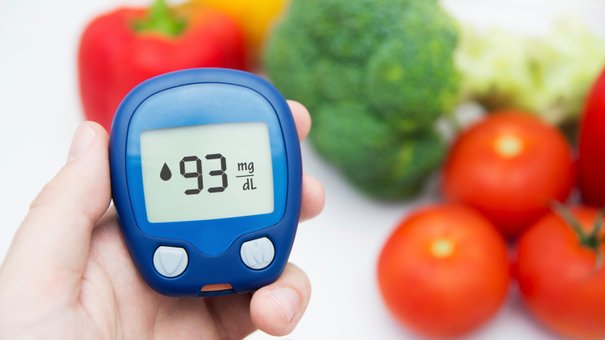
If you…
- are not sleepy or drowsy after your meals…
- are not irritable, dizzy, shaky, weak, or anxious if you don’t eat for 2-3 hours…
- feel energized after your meal (but not hyper!) and could actually be fit for walking…
- experience better mental clarity after your meals…
- don’t crave any sweets after your meal or during the day…
- don’t feel hungry all the time or that “something was missing” from your menu…
- and are not overweight or underweight…
… then you’re among those living in our modern society who don’t suffer from blood sugar dysregulation. And those people are fewer and fewer each day!
What happens in your body when blood sugar runs wild?
Blood sugar and insulin issues are among the most prevalent and physiologically damaging conditions today. The negative impacts of chronically elevated insulin, including transient insulin surges, cause damage to virtually every bodily system leading to everything from coronary and atherosclerotic damage, obesity and weight control issues, neurological symptoms, hormonal dysregulation, hepatic (liver) dysfunction, fatigue and mitochondrial issues, inflammation, and immune system dysfunction, to name a few.
Blood sugar (glucose) is the body’s preferred source of fuel. The brain, organs and muscles run off of glucose. At the deepest level, the cells of our body use glucose to manufacture adenosine triphosphase (ATP) or energy. So if our cells do not get the adequate amounts of glucose into them, we can’t produce energy to help run our body. Without ATP production, hormones are not produced optimally, brain function does not work properly and every system of our body suffers, including our ability to sleep, to loose weight, immune and stress response, etc.
When it comes to blood glucose levels, there are really only two places we can get it – from the food we eat (external source) or glucose that we make (internal source). The modern person’s blood sugar is either chronically low or high, and both are stepping stones to diabetes. Dysglycemia is a condition in which the body loses the ability to keep blood sugar stable. It has numerous negative health effects all throughout the body: it weakens and inflames the digestive tract, weakens the immune barriers of the gut, lungs and brain, drives the adrenal glands into exhaustion, sets the stage for hormonal imbalances, impairs detoxification, fatty acids metabolism, and fatigues metabolism.
When the pancreas pumps out too much insulin due to chronic spikes in blood sugar (determined mainly by high sugar processed foods), blood sugar levels swing from high to low. A hypoglycemic person is prone to crashing, especially around 3-4 PM and experiences a drastic drop in blood sugar levels usually two to five hours after eating. This person has a constant craving for sweets, is grouchy in the morning, gets lightheaded and irritable when meals are missed, is dependent on coffee for energy, feels shaky, jittery, agitated and nervous, becomes upset easily, has poor memory and blurred vision.
Other people slip from hypoglycemia into high blood sugar. The chronic release of insulin to battle high blood sugar exhausts the cells until they start refusing entry to insulin. So the cells become insulin resistant. When cells become insulin resistant and the glucose can’t get in, it circulates round and round the bloodstream, damaging arterial walls and the brain. Because the body wants to normalize blood sugar levels as soon as possible, it converts the excess glucose into triglycerides to be stored as fat. This process demands so much energy that you become sleepy.
Furthermore, insulin resistance decreases the body’s ability to use stored fat for energy. This process also raises serotonin levels, a brain chemical that can induce drowsiness. Insulin resistant people mostly feel fatigued during the day and after meals, have a constant hunger, a craving for sweets that is not relieved after eating them, larger or equal waist girth than hip girth, urinate frequently, have increased appetite and thirst, difficulty loosing weight. Insulin resistance creates a serious risk for heart disease and diabetes, as well as low thyroid activity. It is a contributing factor to sleep apnea, hormone metabolism disorders, obesity and certain types of cancer.
Permanently Solve Your Blood Sugar Problems
1. Don’t eat sweets and junk food
The very first step in ANY kind of healing protocol and resolving of your negative symptoms, has to start with cleaning your pantry from junk, processed food. Although many people know that already, this is not always that easy to accomplish, for two reasons: you probably don’t know that even foods like bottled, “natural” juices or sugary “protein bars” are considered junk food in many cases, or you really don’t know what to replace these processed, ready-made foods with, in order to benefit from a whole food diet.
Cleaning up the pantry is the very first step I address when I work with my clients, but not without offering them first easy, quick and healthy alternatives to their previous processed foods. Every person is different and requires specific methods to incorporate a new diet in her/ his existent lifestyle. Working with a specialist in this case can be highly beneficial and save a lot of time and money in the long run, not to mention avoiding the risk of getting wrong nutritional information.
But as a main, general rule, I usually recommend buying fresh vegetables and high quality meat and using a crock pot for slow cooking. Even non-experienced people can’t go wrong with this. There are many easy recipes for slow cookers, it saves a whole lot of time and doesn’t destroy nutrients in the cooking process. It’s definitely a good start to consider.
Sugar generates the highest swings in blood sugar levels and a continuous desire for more, throwing you in a vicious circle of amplified and interconnected negative symptoms. So it’s very important to reduce sweets and limit yourself to eating fruits in moderation. Eating sweets or sugary foods before bed for example is one of the worst things a hypoglycemic person can do. Your blood sugar can crash during the night, long before your next meal is due. Chances are your adrenals will kick into action, creating restless sleep or that 3 AM wake up with anxiety.
If you ever want to have a dessert or high-sugar foods, never eat them without a source of protein or fat. This will slow down the rate at which glucose is absorbed into the bloodstream and help prevent “insulin shock”.
Even too much starch from carbohydrates in a meal (which still transforms into sugar in your body) can generate the same negative symptoms. Grains, legumes, starchy vegetables like potatoes and peas can all contribute to your blood sugar dysregulation if eaten in high amounts. In general, if you feel sleepy or crave sugar after you eat, you have eaten too much starch.
Also, don’t forget about the hidden sources of foods which are everywhere! Simpler than reading the long list of ingredients on the processed food labels is to avoid them entirely. Then your source for hidden sugar is gone as well. You can read more about the negative effects of sugar and how out of control this issue became in our modern society, in one of my previous articles: Shocking Statistical Truth About Sugar Consumption.
2. Eat right for your unique metabolism and take the right supplements for you metabolic type
Blood sugar regulation calls upon more metabolic processes than any other function in the body. And any one (or more) of those processes could be dysfunctional. The imbalances, inefficiencies or dysfunctions in any one or more of your body’s control systems can arise from failure to meet genetically-based requirements for nutrition, and/or the presence of one or more stressors and blocking factors.
The proper practice of Metabolic Typing addresses every one of those elements which is why it is so successful and so powerful. Food has the power to heal. But it also has the power to make you ill if it is wrong for your metabolism. It is not only what you eat, it is also in what proportions you consume your macro-nutrients (proteins, fats, and carbohydrates) that will allow you to maximize your energy, control cravings, eliminate hunger between meals, control your weight, balance mood and blood sugar levels.
If you follow a diet which is right for your metabolism, but take generic, one-size-fits-all supplements, it would be like running at the same time in two different directions. Nutritional supplements potentially have a lot to offer — they supply a concentrated form of nutrients which can easily compensate for the lacks in our food supply, when used as an adjunct to a proper metabolic type diet.
One of the stunning revelations of the system of Metabolic Typing is that any given nutrient can have opposite biochemical effects in different metabolic types. The reason for this is that every nutrient stimulates or inhibits one or more of the body’s Fundamental Homeostatic Control Systems (FHCS). Different metabolic types are dominated by different FHC’s which dictate how nutrients behave in one person’s metabolism as opposed to someone else’s metabolism. And, of course, this is why it’s critical for people to obtain the quantities and balances of nutrients that are right for their metabolic types.
The primary goal of nutritional supplementation in the case of dysglycemia is to improve insulin receptor function. Blood sugar causes damage to the body but the reason it usually cannot get into cells is due to dysfunction in insulin production and/or insulin receptors. Many pharmaceutical drugs, and even some natural compounds, lower blood sugar by increasing insulin production from the pancreas. Because elevated insulin levels likely caused the resistance issue in the first place, further elevating insulin levels will likely serve to create more dysfunction. Therefore, the goal is to improve insulin receptor function and signaling, and not simply to lower blood sugar. It’s also very important to highly customize each nutrient to each person’s unique nutritional requirements and imbalances.
Among the nutrients and herbs that I usually recommended within the Metabolic Typing program for people who suffer from blood sugar dysregulation are supplements containing alpha lipoic acid, chromium, carnitine, banaba leaf, berberine, gymnema Sylvestre, Brewer’s yeast and bilberry. As far as foods, onions, garlic, blueberry leaf tea, ginger root, fenugreek seed powder, cinnamon, powdered mustard and nutmeg are all beneficial in dealing with blood sugar dysregulations.
3. Don’t skip meals
I often see in my practice how people became the slaves of their daily routines, where taking a break to eat some decent food is out of the question! It is indeed a hectic, busy life we are living and there is no one easy, universal solution here to make the necessary changes in one’s life style, in order to offer the body the right food at the right time, on a daily basis. But I can assure you it IS possible and I witness it more and more each day, since more and more people are simply too sick of being sick! So they are willing to change. Receiving the right support and information is quite important here as well.
When you can’t keep your regular meals and/or need a snack, eat a small amount of protein every two to three hours. Going for long stretches without eating when you have dysglycemia exacerbates your blood sugar issues, affecting other multiple metabolic processes in your body. Nuts, seeds, a boiled egg, cheese or meat, or a low carbohydrate protein shake are some examples of protein snacks. As your dysglycemia improves, you’ll find you can go longer between snacks.
4. Use a glucometer and functional lab markers
Many people have been to the doctor, had their blood tested and were later told they were fine, because all of their values fell within the laboratory reference range. This range is designed to identify disease and pathology, not health.
To accurately evaluate health, you must have your blood work analyzed using a functional or optimal reference range to help identify subtle shifts in physiology that are contributing to negative or unwanted symptoms.
Laboratory reference ranges are statistical averages, not optimum levels. These are created using a bell curve model, where your result is compared to the “average” for that lab. Average does not mean healthy. Additionally, the reference range is very broad and different labs may use completely different reference ranges. So you might be considered diabetic in one state, but not in another! Or you might not benefit from a good thyroid panel because most insurance companies won’t pay for it. The standard in medicine is to establish the mean and then set two deviations, one above and one below the mean. These reference ranges will continue to get wider and wider as patients get sicker and sicker.
Common patterns related to blood sugar dysregulations and the types of these are:
Glucose > 100
Elevated triglycerides, >125
Typically elevated LDL, >150, decreased HDL, <60
Elevated Insulin, >6
C-reactive Protein , >3
Homocysteine, >6
LDH >140
Hemoglobin A1C >5.6%
Because blood sugar regulation involves the participation of more elements of metabolism than any other function in the body, it can serve as an excellent indicator of overall body stress, metabolic efficiency, and capacity for adaptation. Thus, monitoring blood sugar can also act an indicator of the improvement or worsening of health complaints from employed protocols.
The correct metabolic typing protocol will balance body chemistry, maximize metabolic efficiency and restore function — and will also result in improved blood glucose regulation, both in terms of fasting blood sugar levels as well as the blood sugar curve following a glucose challenge.
Monitoring blood glucose levels can be done at home using a glucometer, available at practically any pharmacy. Test blood glucose using the glucometer four times in one day upon awakening, before lunch, before dinner and before bed. All readings should be between 85-100 (for glucometers calibrated for plasma).
5. Solve your blocking factors
Suppose you test for parasites and it comes back positive. You do an anti-parasite protocol. The blood sugar drops significantly. Yes, you succeeded in (temporarily) lowering blood sugar. But if the cause of the parasite presence was due to leaky gut, precipitated by food reactivities, brought on in great part due to deficient hydrochloric acid production, caused by heavy metals or petrochemical toxicity, how much true healing and real help have you provided to your body? By treating (just) the parasites and leaving the other stressors and blocking factors in place, you risk the development of much more serious degenerative conditions down the line, particularly the autoimmune and neurodegenerative conditions that are sky-rocketing. (William Wolcott, Founder of Healthexcel System of Metabolic Typing)
Even with a right diet, exercise and supplementation, the blood sugar dysfunction can persist. In this case, it’s important to go further in detecting blocking factors, which can range from food reactivities, leaky gut, to heavy metal toxicity, nutritional imbalances and hormonal dysfunction.
A very common pattern is when elevated cortisol keeps glucose elevated from the inside of your body. Elevated cortisol over the long term consistently produces glucose, leading to increased blood sugar levels. Since a principal function of cortisol is to shunt the effect of insulin which renders the cells insulin resistant, the body remains in a general insulin-resistant state when cortisol levels are chronically elevated. Eventually the pancreas struggles to keep up with the high demand for insulin, glucose levels in the blood remain high, the cells cannot get the sugar they need, and the cycle continues. Cortisol can also mobilize triglycerides from storage and relocate them to visceral fat cells (around the belly). Thus, getting rid of that beer belly is not easy for many people who don’t address all the underlying causes.
6. Exercise
Research is clear that a combination of cardiovascular and resistance/strength training is invaluable in helping to correct blood sugar and insulin dysregulation. But as it is with food, there is no one size fits all type of exercise for everyone. Fact is, many types of exercise can actually work against you, if they are not right for what your body needs at the time.
It is crucial to have your stress level assessed before you start doing any exercise. When we are exposed to any combination of stressors that elevate our stress hormone beyond the optimal, our repair hormones are suppressed. Typically in athletes this results in over-training syndromes, while in bodybuilders and other people wanting to add muscle or change their body shape, it simply results in lack of progress.
Many people who commit to regular, strenuous exercise begin the day eating too many carbohydrates (often processed) for their metabolic type. This elevates blood sugar triggering a release of insulin to lower the sugar level. The process continues until the blood sugar is too low, causing glucocorticoids (stress hormones) to be released. These stress hormones trigger the discharge of stored glycogen in the liver – a response designed to elevate blood sugar. This cycle of increased and decreased blood sugar level typically happens repeatedly during the day due to the combination of eating meals and snacks that are metabolically imbalanced and drinking any number of caffeinated sugar drinks.
So in order to really benefit from your exercise routine, you have to work with a specialist and assess your stress level prior of starting the program. Don’t be surprised if you’ll be told you need to engage first in more relaxing, stress relieving exercises like yoga or tai chi, instead of running yourself to death on a treadmill. Or that you are actually ready to incorporate some cardio exercises in your routine instead. It really all depends where you stand in terms of health, vitality and the ability to engage in a sport so that it benefits your body, not work against you.
Resources:
- The Healthexcel System of Metabolic Typing
- Walsh, Bryan, ND. Fat Is Not Your Fault
- Check, Paul. Paul’s Check’s “No workout, workout”.
- Kharrazian, Datis. Why Do I Still Have Thyroid Symptoms?
- http://metabolichealing.com/normalizing-glucose-insulin-powerfully-decreases-inflammation/
- http://metabolichealing.com/elevated-insulin-the-real-killer/
Please note: This article is not intended to provide medical advice, diagnosis or treatment.
Source: https://wakeup-world.com
Disclaimer: We at Prepare for Change (PFC) bring you information that is not offered by the mainstream news, and therefore may seem controversial. The opinions, views, statements, and/or information we present are not necessarily promoted, endorsed, espoused, or agreed to by Prepare for Change, its leadership Council, members, those who work with PFC, or those who read its content. However, they are hopefully provocative. Please use discernment! Use logical thinking, your own intuition and your own connection with Source, Spirit and Natural Laws to help you determine what is true and what is not. By sharing information and seeding dialogue, it is our goal to raise consciousness and awareness of higher truths to free us from enslavement of the matrix in this material realm.
 EN
EN FR
FR


























Dwayne R, Agree 100%.
I am a type 2 diabetic, started the ketogentic diet 4 months ago
( 75% fat, 20% protein 5% carb)
Lost 55 lbs and my blood work is now great!
I am of course still a diabetic, but now can control it… dropped the Glipside by 50%. Another 4 to 6 months (20 to 40 lbs to lose) and I may be drug free.
Excellent article.
Duane R,
While what you say is true and you speak from your experience – this is your style to speak rather than a trained educational teaching style such as this article for nutritionally focused body system education for regulation and homeostasis.
What King died for you to replace to get on your high horse? That was quite obnoxious and very rude to say ‘what crap’.
So …I’ll just say….
“There’s none so righteous as the newly converted health guru, such as yourself’.
~ Marilyn
Naturopath
Such crap.
I’ll tell you how to control your blood sugar
Eat low carb most diabetics do great at around 5% of total calories from carbs. 50 grams or less per day only carbs that are 2-5 grams per serving.
Eat WHOLE carb. Whole as in vegetables not candy
No starch, no sugar, no grains
No metabolic typing necessary
No supplements necessary, get your vitamins and minerals from whole foods. Use supplements if and when deficiency is confirmed by your doctor.
Per this position paper by the Ada, pdf direct download
https://t.co/9CwdJZU3IX?amp=1
Page 12, medical nutrition Therapy section
Low carb, defined as less than 26% of till calories from carb, is now supported and even moderate carb restriction, defined as 26-45% of total calories, is listed as of “no benefit”
Adequate protein 15-35% of total calories or .8-1.2 grams per lb
Revert to NATURAL fats
Stay away from the junk in bottles that the medical world says is healthy. It’s toxic because the oil is made from seeds, making it poly unsaturated fat. The weakest form of fat and also the form of fat humans need the least of.
Yet it is touted as the most vital fat by the medical world.
Go back to eating real fats like butter and lard ghee and tallow
Use some Olive oil
Don’t go crazy with it but don’t fear it.
Test your glucose as often as you wish
Fasting, pre meal, post meal, bedtime, overnight, random
Tests are a better indicator of glucose control because that is exactly what they look at. A1c is NOT a blood sugar measurement.
It tests how much glucose is adhered to red blood cells.
It correlates to an average glucose level yes, but it doesn’t tell you exactly what your glucose level is or has been.
Get off your duff and get some exercise
I’ve just told you exactly how to control your blood sugar problems
For free
No
I’m not a doctor
I’m a fellow patient
Last A1c was 5.4%
I started at 14.8%
I have not used any diabetes medication in five years.
Gonna finish up with this.
Diabetes is not some great mystery.
Ever notice how they tell you not to eat fat and cholesterol for cholesterol issues, and yet it doesn’t help???
The reasoning is wrong.
Fat and cholesterol aren’t the villains.
Unlike cholesterol, diabetes is very much a input/output disease.
Carb in the diet is the largest source of glucose in the blood.
Diabetes is a glucose regulation disease
Our bodies cannot properly control our glucose levels.
You don’t control a fire by throwing gasoline on the flames
You don’t control a glucose regulation issue, by eating a diet filled with carbs.
Garbage in, garbage out
Carbs in, glucose up
Don’t take my word for it
Try it see if it’s not the truth.
Good luck to you all.
I agree with you 100%! My doctor told me your ago that my glucose levels were raised and that I needed to come in for additional tests excetera excetera excetera and probably medication. well I came home and got online started doing some research and reading and found out that it was all about the carbs and lack of exercise. So I started doing intermittent fasting and a low carb diet. One year later I’ve lost 80 lb my blood sugar’s are within normal ranges most days and I feel like a million dollars. The following Dwayne R’s advice and see what can happen to your glucose levels!
Very informative
Thank you
Nice and very informative piece of work.
Thank You!!!
Loved your article. Please send this and more to me. Best info I ever received. Thanks.
I found this article to be very enlightening but how do I find a health Care specialist in my area who is familiar with this protocol and approach. I can’t even Google if I don’t know what to ask for 🙁